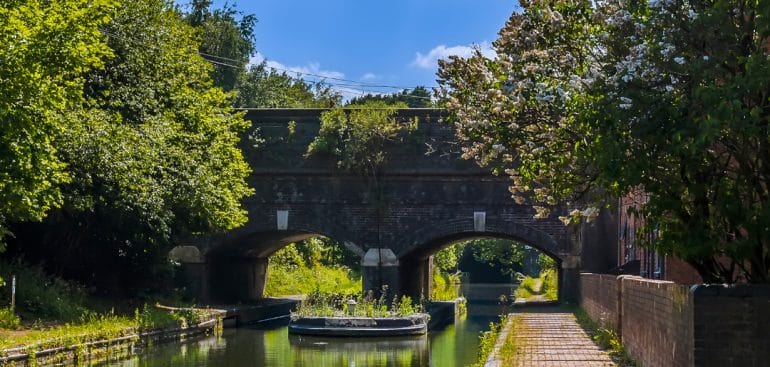Navigating Dudley’s History Canal Heritage
Dudley’s history is deeply intertwined with its canal network—an essential lifeline during the Industrial Revolution. The first major route, the Dudley No. 1 Canal, was championed by Lord Dudley in 1775. After survey work by Robert Whitworth, construction began in 1776 with an Act of Parliament supporting the build. By 1779, it connected Dudley to the Stourbridge Canal, and by 1792, the iconic Dudley Tunnel was completed, linking it to the Birmingham Canal (YouTube, lapalcanal.co.uk).
Building on this success, the Dudley No. 2 Canal—with daring engineering feats like the 18-meter embankment over Leasowes Valley and the 2.2-mile Lapal Tunnel—opened in stages from 1794 to 1798. This canal helped unlock new trade routes vital for transporting coal and industrial goods (lapalcanal.co.uk), cementing its place in Dudley’s history.
Significant figures also helped forge this legacy. John Snape’s original 1792 canal plans are now preserved at the National Waterways Museum. Thomas Brewin, canal superintendent, innovated a steam-pumping system in 1841 to speed up canal traffic, and in 1846 the Dudley canals merged with the Birmingham Canal Navigations to improve coordination and stave off railway competition. These events are key moments in the history of Dudley town, reflecting both innovation and resilience.
Tunnel Tales & Comebacks
The Dudley Tunnel, begun in 1785 and completed in 1792, was created to connect limestone mines below Castle Hill with the broader canal network (nationaltransporttrust.org.uk). However, by 1962, it was slated for closure. Thanks to fierce public protest—and the efforts of the Dudley Canal Tunnel Preservation Society formed in 1963 (now the Dudley Canal Trust)—the tunnel was restored and reopened in 1973, a remarkable act of heritage preservation (Wikipedia). This comeback is a defining chapter in Dudley history.
From Industrial Artery to Heritage Attraction
Today, many parts of Dudley’s canal system are no longer industrial thoroughfares—some collapsed or closed due to mining subsidence and railway reuse—but they remain vital to Dudley local history. The Dudley No. 2 Canal, for example, was largely abandoned by the early 20th century.
But these old waterways found new life as centres for education and heritage. A prime example is the Black Country Living Museum, established in the late 1970s. This sprawling open-air museum includes restored industrial buildings, working trams, and a narrowboat that takes visitors into the Dudley Tunnel or caverns—woven into the canal’s living story. It’s an essential visit for anyone interested in the history of Dudley town and the evolution of the region.
Nearby, the Wren’s Nest geological reserve offers another historical layer. The site, abandoned quarries of Silurian limestone rich in fossils (including the famous trilobite “Dudley Bug”), became Britain’s first geological National Nature Reserve in 1956. It vividly captures Dudley’s local history, with its ties to industry and geology still visible today.
Remembering Dudley’s Industrial Spirit
These canals and tunnels do more than link places—they link eras. Memorials and artifacts, like the Titanic anchor created by N. Hingley & Sons in 1848, recall the region’s broader industrial impact with sculptures still visible around Netherton. These monuments preserve moments of Dudley’s history and pay tribute to its industrial identity.
At Dudley Canal Trust’s visitor centre—The Portal—modern-day visitors can dive into this heritage with exhibitions, improved access, and more opportunities to engage with canal history, limestone mines, and the fascinating geography of Castle Hill (The National Lottery Heritage Fund). It’s an immersive way to experience Dudley local history in action.
In short, Dudley’s canals are living history. From 18th-century industry and engineering breakthroughs to modern-day walks and heritage tours, each lock and tunnel tells a layered story of innovation, community, and rediscovery in the ever-evolving history of Dudley town.
Dudley Canal and Tunnel Trust is a unique heritage attraction located in the heart of the West Midlands. We offer visitors an unforgettable journey through a network of historic limestone tunnels and caverns, carved beneath the town of Dudley. Our guided boat trips provide a fascinating insight into the region’s industrial past, showcasing stunning underground scenery and historical features. As a charitable organisation, we are dedicated to preserving this important part of the UK’s industrial heritage and providing educational experiences for all ages. Our site includes a visitor center with interactive exhibits, a gift shop, ensuring a memorable day out for families, school groups, and history enthusiasts alike.
Dudley Canal and Tunnel Trust is part of the Black Country Global Geopark, which celebrates the geological and cultural heritage of the region.
For media inquiries, please contact:
Paul Crofts
CEO
